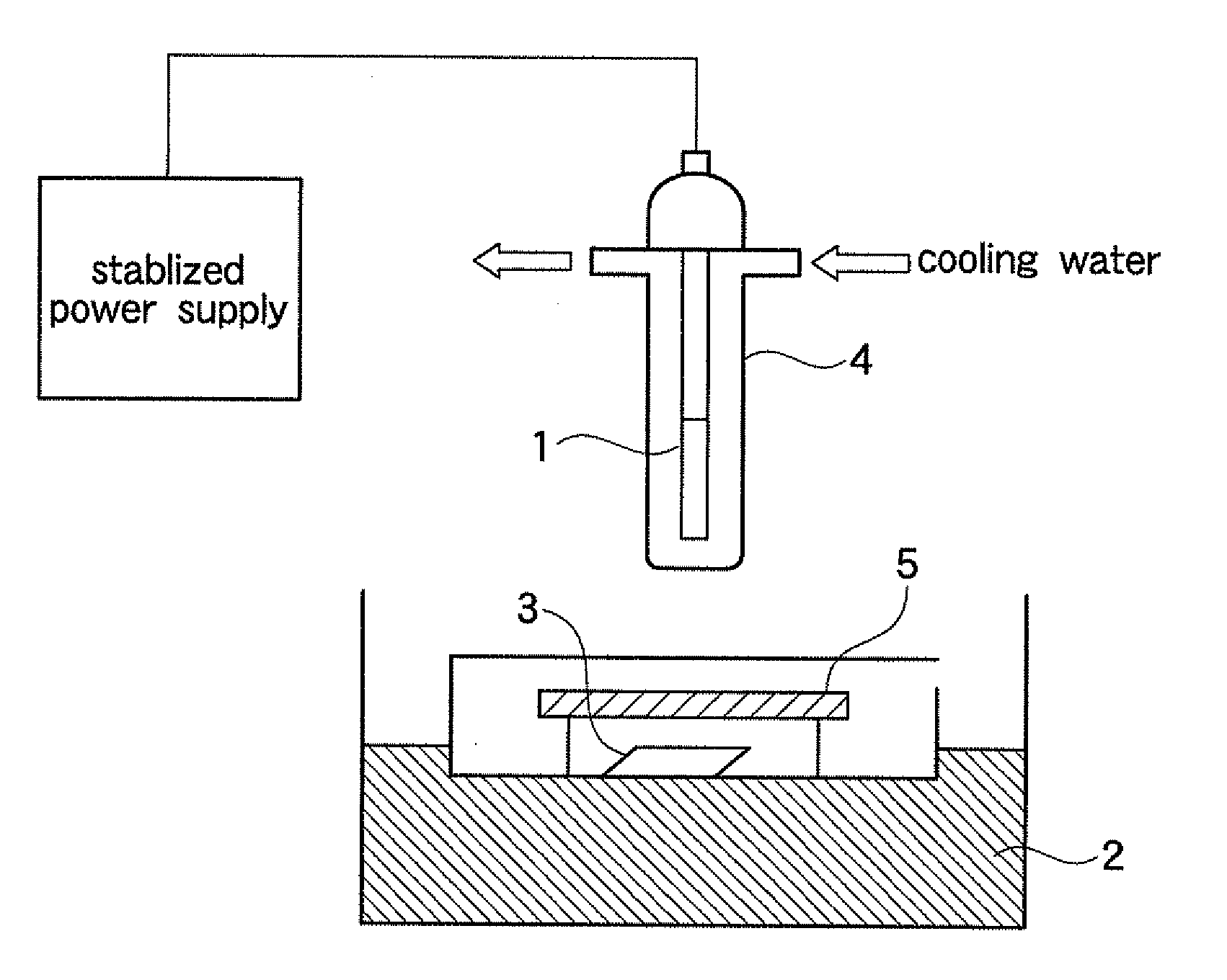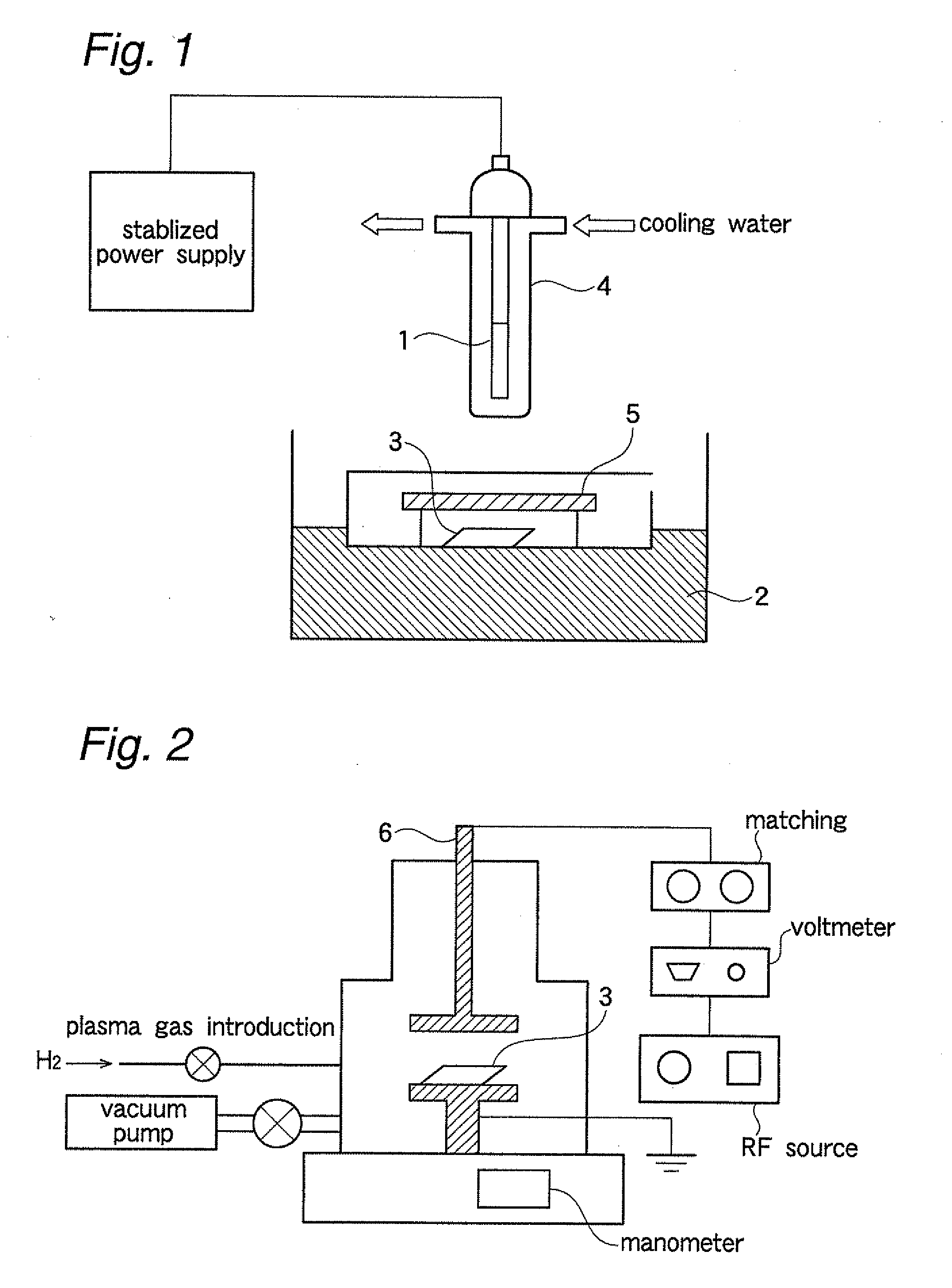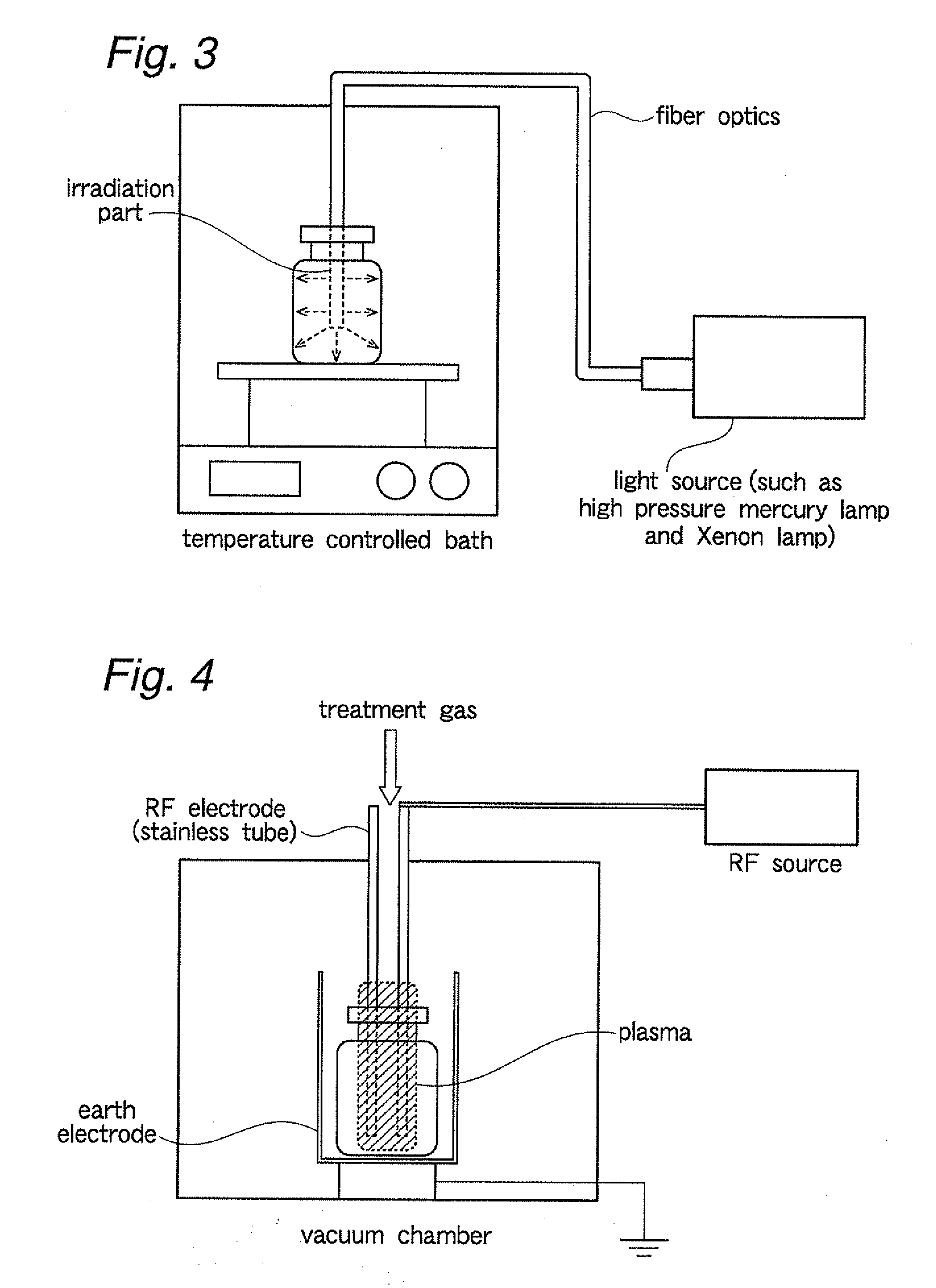Medical Containers and Treating Method for Producing Medical Containers
a technology for treating methods and medical containers, applied in the field of medical containers and a treating method for producing medical containers, can solve the problems of contaminating the contents, a dangerous cut end, and a difficult opening of the ampule,
- Summary
- Abstract
- Description
- Claims
- Application Information
AI Technical Summary
Benefits of technology
Problems solved by technology
Method used
Image
Examples
examples
[0058]The present invention will be described by Examples below without limiting the scope of the invention.
examples 1-3
Light Irradiation with High-Pressure Mercury Lamp
[0059]A light irradiation apparatus shown in FIG. 1 was used.
[0060]A light source was a high-pressure mercury lamp equipped with a water-cooled condenser tube. During irradiation with light, a sample was heated over an oil bath at 130° C., 140° C. or 150° C.
[0061]The sample was a 1 mm thick plate prepared from polyethylene naphthalate pellets (TEIJIN CHEMICALS LTD., TEONEX TN8065s). The sample was placed on a table below the light source, and a 390 nm cut filter was placed above the sample to adjust the wavelength. Both surfaces of the sample were each irradiated with light for 60 minutes.
[0062]The sample was subjected to a dissolution test as described below.
Dissolution Test
[0063]The sample was tested in accordance with a general test procedure of dissolution test specified in the Japanese Pharmacopoeia. Pieces of the sample treated as described above were collected so that the total surface area was 600 cm2. The pieces were washed w...
example 4
[0067]A surface of polyethylene naphthalate was treated using a plasma generator shown in FIG. 2. The sample used was the same as that used in Examples 1 to 3. Hydrogen was used as the plasma gas, and the pressure was 20 Pa. An output voltage of 150 W was applied from an RF power source. The sample was plasma treated for 10 minutes.
[0068]A dissolution test was performed as described in Examples 1 to 3. The hydrolysis resistance was evaluated based on a maximum absorbance. The results are given in Table 1. The absorbance of the test liquid was lower than that in Comparative Example, indicating prevention of leaching of the monomer by the plasma treatment.
TABLE 1Absorbance of testTreatmentTemperatureliquidEx. 1Light150° C.0.07irradiationEx. 2Light140° C.0.10irradiationEx. 3Light130° C.0.11irradiationEx. 4Plasma—0.09treatmentComp.No treatment—0.13Ex.
PUM
| Property | Measurement | Unit |
|---|---|---|
| Wavelength | aaaaa | aaaaa |
| Gas permeability | aaaaa | aaaaa |
| Thermal resistance | aaaaa | aaaaa |
Abstract
Description
Claims
Application Information
 Login to View More
Login to View More - R&D
- Intellectual Property
- Life Sciences
- Materials
- Tech Scout
- Unparalleled Data Quality
- Higher Quality Content
- 60% Fewer Hallucinations
Browse by: Latest US Patents, China's latest patents, Technical Efficacy Thesaurus, Application Domain, Technology Topic, Popular Technical Reports.
© 2025 PatSnap. All rights reserved.Legal|Privacy policy|Modern Slavery Act Transparency Statement|Sitemap|About US| Contact US: help@patsnap.com



